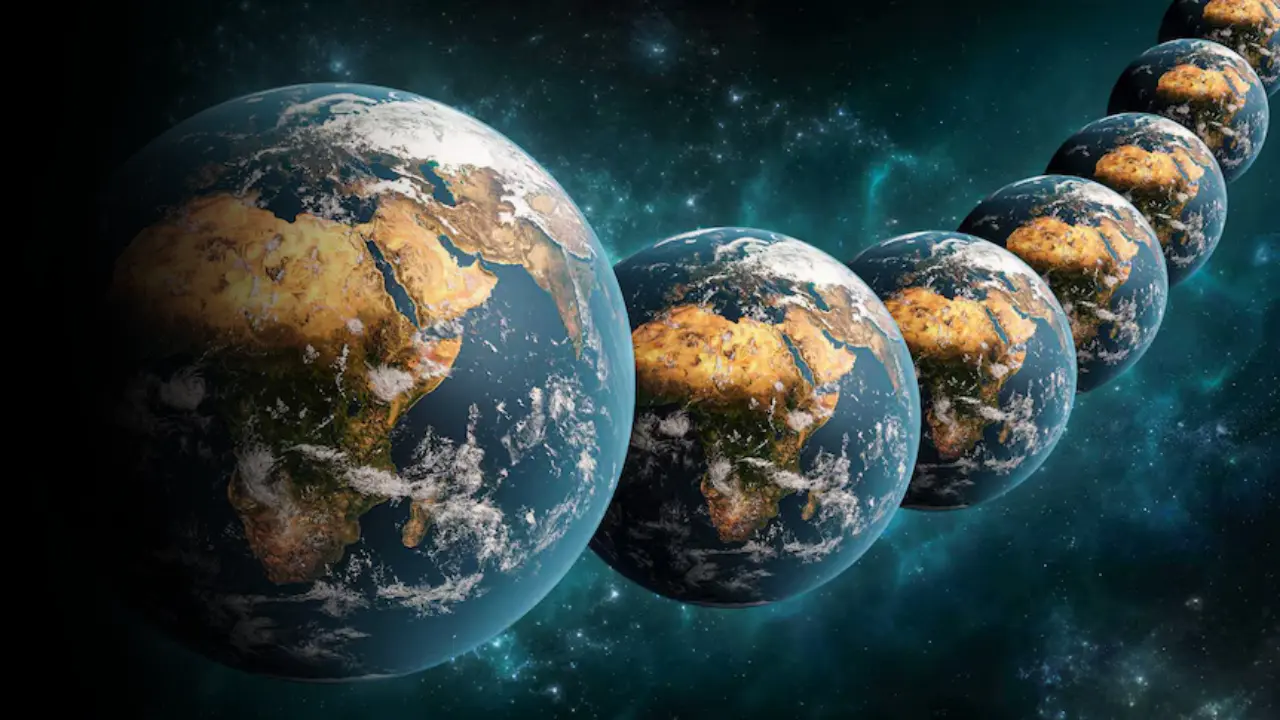Have you ever felt like your dreams are more than just imagination? Or wondered if reality itself is an illusion?
Concepts like parallel realities, simulation theory, and dreams challenge our understanding of existence. Scientists, philosophers, and thinkers have long debated whether our world is the only one, or if there are multiple layers of reality that exist simultaneously.
In this article, we’ll explore the science and theories behind alternate existence, breaking down what we know (and don’t know) about parallel universes, the possibility of living in a simulation, and the mysterious nature of dreams.
The Theory of Parallel Realities
The idea of parallel realities suggests that multiple versions of existence could run alongside our own, each slightly different or drastically altered. This concept is often linked to quantum mechanics and the Many-Worlds Interpretation of physics.
The Many-Worlds Interpretation
Physicist Hugh Everett proposed in 1957 that every possible outcome of a quantum event happens in a separate, branching universe.
For example, in one universe, you chose to read this article, and in another, you didn’t. If true, this means there could be an infinite number of parallel universes, each reflecting different choices and possibilities.
Scientists don’t have direct proof of these worlds, but experiments in quantum mechanics, such as the double-slit experiment, show that particles behave in unpredictable ways, hinting at the possibility of multiple realities interacting.
Other Scientific Theories on Parallel Realities
- Cosmic Inflation Theory: Suggests that different regions of space-time expanded at different rates, leading to separate universes with unique physical laws.
- String Theory & Multiverse Hypothesis: Proposes that multiple dimensions exist beyond our perception, some possibly containing alternate versions of reality.
Are We Living in a Simulation?
Simulation theory takes a different approach to questioning reality. It proposes that our universe could be an artificial construct, like a highly advanced computer program.
This idea was popularized by philosopher Nick Bostrom in 2003, who argued that if civilizations become advanced enough, they might create simulated realities indistinguishable from the real thing.
Some scientists, including Elon Musk, believe that given the rapid advancement of technology, the odds are high that we’re living in a simulation rather than an objective reality.
Scientific and Philosophical Arguments for Simulation Theory
- Computational Limits in Physics: The universe seems to have a maximum speed (the speed of light) and quantized energy levels, much like a digital system with processing constraints.
- Strange Quantum Behavior: In quantum mechanics, particles exist in multiple states until observed. This is similar to how video game environments render only when the player looks at them.
- Consciousness as a Program: Some scientists speculate that human thoughts and emotions could be lines of code running on an advanced system.
While there’s no concrete proof that we live in a simulation, the idea raises deep philosophical questions: If we are in a simulation, who (or what) created it? And could we ever escape it?
Dreams: A Glimpse into Alternate Realities?
Dreams have fascinated humans for centuries. Some believe they are just brain activity, while others think they offer glimpses into other realities.
The Science of Dreams
Neurologists explain dreams as the result of the brain processing memories and emotions during sleep. The Rapid Eye Movement (REM) stage is when most vivid dreams occur. However, certain dream experiences challenge conventional explanations:
- Lucid Dreaming: In a lucid dream, the dreamer is aware they are dreaming and can control the environment. This phenomenon suggests that consciousness may extend beyond waking life.
- Shared Dreams & Precognition: Some people report having identical dreams with others or seeing events in dreams before they happen. While mainstream science hasn’t confirmed these experiences, they raise questions about whether dreams connect us to a deeper layer of reality.
Could Dreams, Parallel Universes, and Simulations Be Connected?
Some theories propose that dreams are a way of experiencing alternate realities. If the Many-Worlds Interpretation is correct, dreams might allow us to glimpse into different versions of ourselves living in parallel universes. Similarly, if we are in a simulation, dreams could be a way the system relays information or alters our perception.
Conclusion
Whether through the lens of quantum physics, computer simulations, or neuroscience, the nature of reality remains a mystery. Parallel realities, simulation theory, and dreams all suggest that existence may not be as straightforward as it seems. While we may never fully prove these concepts, they challenge us to think beyond what we consider “real” and keep searching for answers.
Are we alone in our universe, or do we exist in countless versions? Is reality an advanced simulation, or is it something even stranger? The search for the truth continues.
